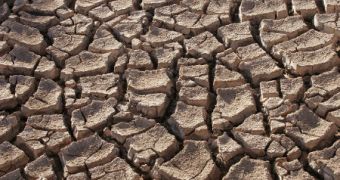Over the past five years or so, the Amazon region has been plagued with two massive droughts, the second more intense than the first. The former, which took place throughout 2005, was to be a once-in -100-year event. But the one that plagued the river basin in 2010 was even more intense.
Droughts are devastating to rainforests, the last largest planetary “lungs” Earth has left. The stress that lack of water brings forth augments that put on the area by human development. People are cutting down trees to make way for plantations every day.
This is causing significant species decline throughout the Amazon basin, and is releasing massive amounts of carbon dioxide into the air above. This contributes to global warming and climate change, events believed to be responsible for the droughts.
Unfortunately, scientists' predictions are apparently coming true. Various simulations have shown that this is precisely what will happen to the entire area, which is very sensitive to climate change.
“Having two events [floods] of this magnitude in such close succession is extremely unusual, but is unfortunately consistent with those climate models that project a grim future for Amazonia,” explains University of Leeds expert and lead study author Dr Simon Lewis.
He and his team looked at rainfall patterns covering more than 5.3 million square kilometers in the Amazon basin. The research was carried out during the 2010 dry season, which in the end turned out to be more severe and widespread than the 2005 one.
Details of the investigation appear in a recent issue of the top journal Science. The work was conducted by researchers in Brazil and the United Kingdom. The main conclusion is that the rainforest may have produced about 5 billion tons of carbon dioxide last year.
These amounts were released as the drought killed off trees. As this happened, the carbon they stored was released back into the air. The amount of CO2 the forest released was massive in 2010. Throughout 2009, the United States released 5.4 billion tons of CO2 by burning fossil fuels.
“We will not know exactly how many trees were killed until we can complete forest measurements on the ground,” says Brazilian expert Dr Paulo Brando, who is based at the Amazon Environmental Research Institute (IPAM).
“It could be that many of the drought susceptible trees were killed off in 2005, which would reduce the number killed last year. On the other hand, the first drought may have weakened a large number of trees so increasing the number dying in the 2010 dry season,” he adds.
“Our results should be seen as an initial estimate. The emissions estimates do not include those from forest fires, which spread over extensive areas of the Amazon during hot and dry years. These fires release large amounts of carbon to the atmosphere,” the expert concludes.

 14 DAY TRIAL //
14 DAY TRIAL //